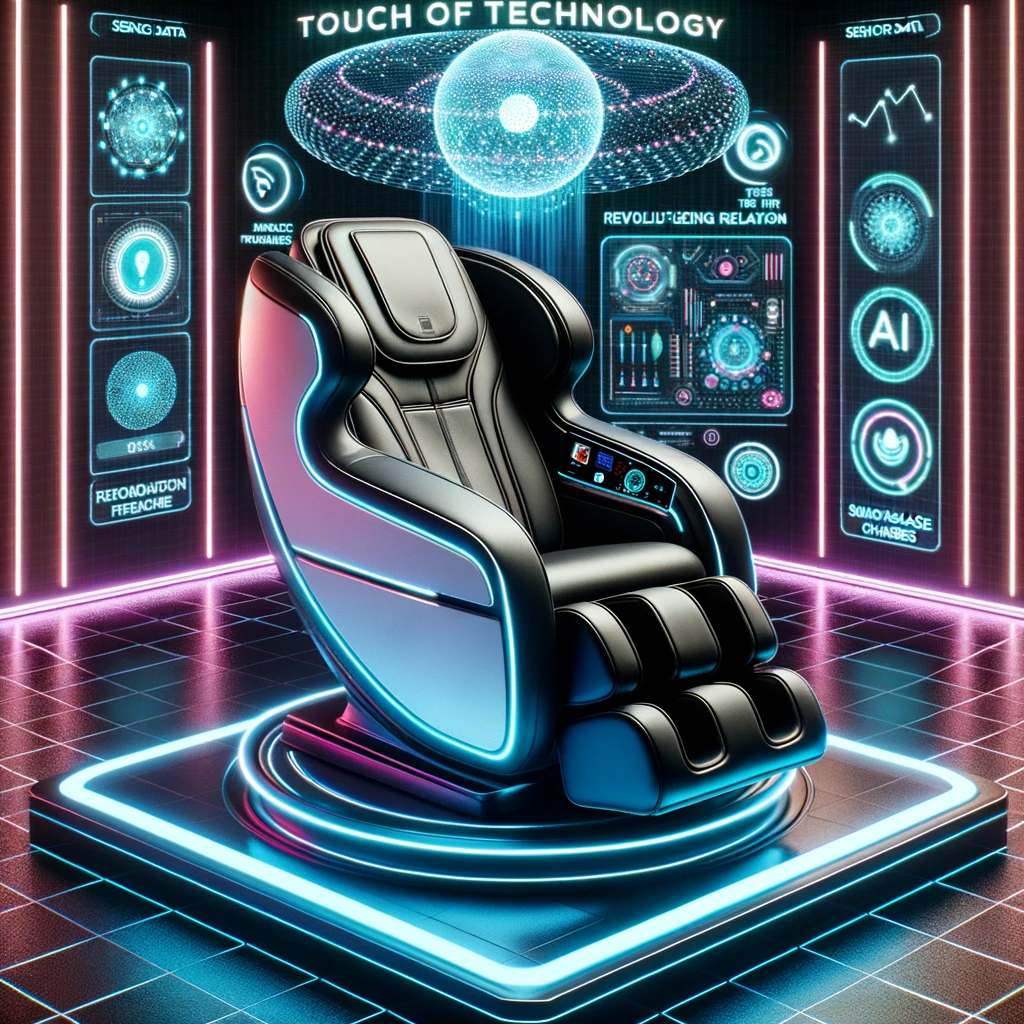Touch of Technology: How Massage Chairs Work with AI and Smart Features
In today’s smart world, it’s not just our phones that are getting intelligent. Even relaxation has a high-tech twist. So, how massage chairs work with cutting-edge AI and smart features? Do they simply vibrate and roll, or is there a ‘brain’ behind the comfort? Dive into the technological marvels that power the modern massage chair.

Beyond Just Motors and Rollers
While early massage chairs primarily used mechanical methods like vibrating motors and rotating rollers, the modern massage chair is a symphony of sophisticated sensors, actuators, and software. These components come together to provide a massage experience that feels eerily close to human touch.
Sensing and Responding: The AI Connection
- Body Scan Technology: Modern chairs use infrared sensors and cameras to scan your body’s contour, identifying pressure points and areas of tension. This ensures that the massage is tailored precisely to your unique body shape.
- Predictive Analysis: AI algorithms analyze past massage sessions, considering factors like the intensity preferred, areas focused on, and feedback given. The chair “learns” from each session to offer a more personalized experience over time.
- Real-time Feedback Loop: Advanced chairs adjust the pressure and technique in real-time based on the user’s reactions. They detect changes in muscle tension and can even respond to vocal feedback.
Smart Features for Enhanced Relaxation
- Voice Commands: Much like smart home devices, some high-end massage chairs now respond to voice commands. You can ask the chair to adjust the pressure, focus on a particular area, or even switch between different massage techniques.
- Connectivity: Some chairs can be connected to apps on smartphones, allowing users to download new massage routines, track their relaxation sessions, or even play calming music through built-in speakers.
- Virtual Therapists: A few top-tier models have integrated virtual assistants that offer guided relaxation techniques, combining massage with meditative guidance.
User Interface and Customization
A significant benefit of integrating AI and smart tech into massage chairs is the ability to customize:
- Personal Profiles: Users can create profiles, saving their favorite massage routines, intensities, and more.
- Interactive Displays: Touchscreen panels or accompanying tablet controls allow users to visualize the massage process, adjust settings, and get real-time feedback on the areas being worked on.
Challenges and Considerations
While AI and smart features elevate the massage experience, there are challenges:
- Data Privacy: With chairs collecting data about personal preferences, body shape, and more, concerns about data privacy and security arise.
- Cost: Integrating advanced tech invariably increases the chair’s price, potentially making them inaccessible to some.
- Maintenance: Smart chairs, with their intricate software and hardware components, may be more challenging and expensive to repair than their traditional counterparts.
The Future of Smart Relaxation
As technology continues to evolve, the line between a traditional massage therapist and a massage chair will blur further. With the integration of augmented reality, virtual reality, and even more advanced AI algorithms, the massage chair of the future may offer holistic relaxation experiences that cater to both body and mind.
Conclusion
The massage chair has come a long way from being a simple mechanical device. With the touch of technology, it has morphed into a relaxation powerhouse that can “think”, “learn”, and “adapt”. The journey into understanding how massage chairs work with AI and smart features is not just fascinating but also a testament to human ingenuity in the quest for ultimate comfort.